Planning to decorate your terrace garden with flowering trees? If yes, Let’s start with the Azalea Bonsai Plant, the perfect bonsai to fill your bonsai garden with pink and white flower clouds.
Here is the ultimate guide to taking care of your blooming bonsai, the Azalea (rhododendron Indicum)
The Azalea will be the most artistic and satisfying bonsai for you to possess in your home garden; if you wonder why we have two solid reasons to back our statement.
Firstly, the tree blooms with spectacular flowers in beautiful pink, white, and yellow shades. Secondly, you can grow them easily as they adapt well to container cultivation. Makes it a perfect choice as you can quickly grow them even if you are an absolute beginner.
Though it also comes with a disclaimer note requiring regular care and a tender approach as these plants are super delicate, pruning and wiring must be done very gently when you style your bonsai.
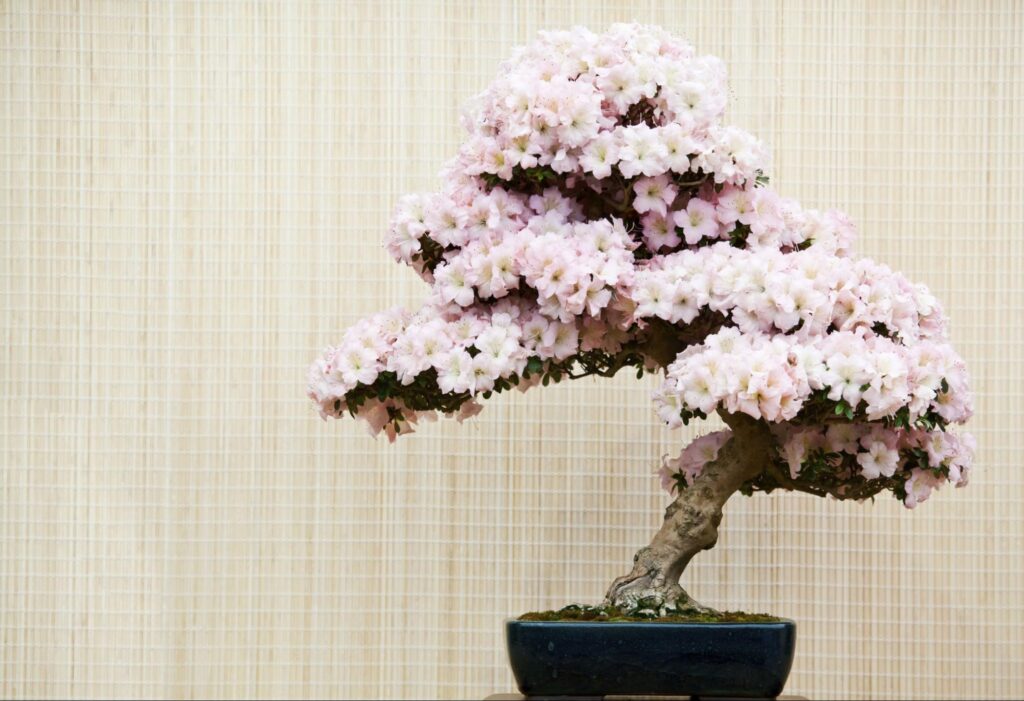
Azalea Bonsai Plant Key Facts
| Botanical name | Rhododendron indicum |
| Common name | Satsuki Azalea |
| Description | The Azalea bonsai plants are native to Japan and belong to the hardy outdoor bonsai trees, mainly cultivated as bonsai for the tree-like look, abundantly bearing colorful flowers. |
| Height | 2 – 3 feet tall |
| Width | About 5 feet |
| Sunlight | 4 – 5 hours of sunlight outdoor for healthy growth |
| Watering | Water abundantly in summer until the soil is wet. Avoid watering until the soil is soggy, and reduce watering during the cold seasons. |
| Fertilizing | Use organic fertilizers such as Hanagokoro or Biogold. |
| Pruning time | Prune immediately after the flowers bloom; never prune until the buds are about to bloom. |
| Repotting time | Repotted every two years, during spring or after flowering |
| Life span | Around 35 years |
| Note | Azalea trees are evergreen, long-living plants famous for colorful and artistic flowers. |
Shopping for a flowering bonsai online can offer a convenient way to find and purchase a beautiful miniature tree. Many reputable online retailers offer a wide variety of species and sizes to choose from, such as Azalea, Cherry Blossom, and Wisteria. However, it’s important to research the specific care requirements of your chosen tree to ensure it thrives and blooms beautifully in your environment.
How to Care for Azalea Bonsai Plant
Caring for your plants becomes simpler when you grow them in unacceptable conditions. Most of the work is done when you provide the necessary condition for your bonsai. Once planted in perfect conditions, you have minimal effort to care for them. Here are a few conditions to consider when growing and caring for Azalea Bonsai.
Placement of Azalea bonsai
To make things clear, Azalea is not a house plant, meaning they don’t grow well indoors. The plant needs to be kept outside in the sunlight in the morning and shade in the evening. Though you can occasionally decorate your indoors with them, provided they get direct sunlight daily.
They are delicate to frost, providing winter protection for the plant. Please keep it in a protected location during the dormancy and mulch them up. Avoid the plant being exposed to frost; instead, at those times, move the plant to warm indoors.

Watering the Azalea Bonsai Plant
Azalea, being a flowering plant, needs abundant water to stay healthy. Therefore, water the tree once a day, preferably in the morning.
If the plant-soil dries up, the roots desiccate and die, so to avoid these unfortunate events, the plant must be watered regularly but avoid overhydration. Flooding the soil will make them soggy.
Never hard water on your plants; the lime deposits harm the plants. Adding vinegar to the plant monthly can regain the soil pH value if hard water is the only available hydrating source.
Fertilizing Azalea Bonsai
You must use fertilizer every week during growing seasons; later, you can reduce the frequency to once a month. Stop the feeding once the spring begins, as over-fertilizing can kick start the leaf growth over the flower buds, and there is no point in growing an Azalea bonsai without flowers.
Since plants hate lime deposits, it’s smarter to opt for acid-based fertilizers like Mir-acid to feed your plant. Reduce the nitrogen from the fertilizer mixture and add more phosphorus and potassium when the season changes from summer to autumn.
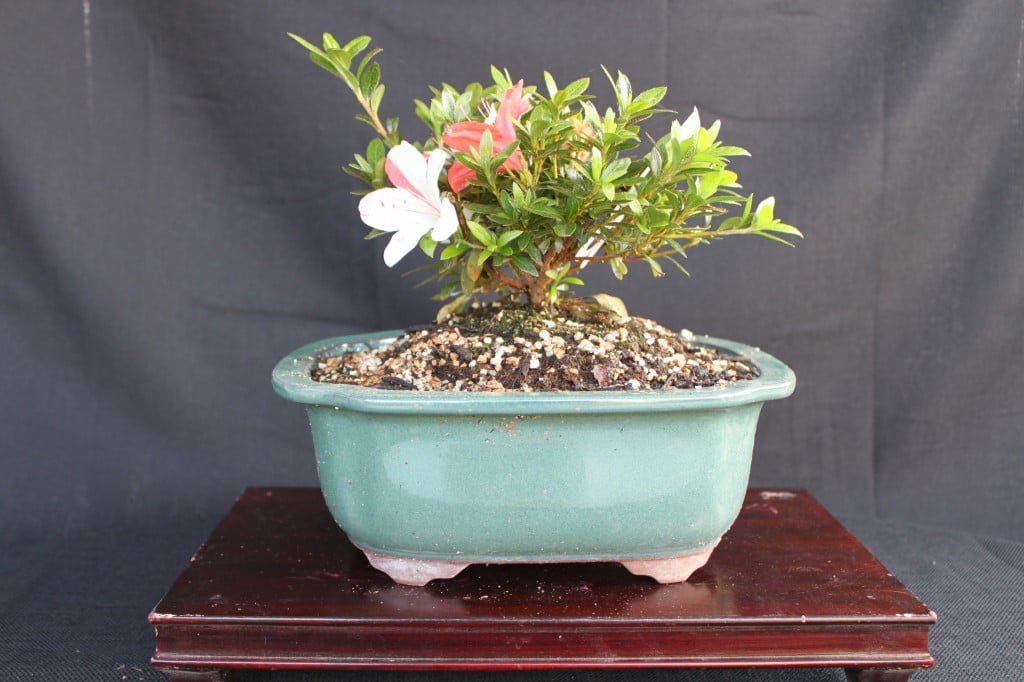
Pruning Azalea Bonsai
Pruning is done to remove specific parts or portions of the plant to encourage better growth in the plants. Pruning balances the growth of the plant and fruit production. It also helps to cut down disease and pest infestation in the plants.
When to Prune Azalea Bonsai?
Once the flowering season ends, you can start pruning. Choose early summer and autumn days to prune the plant; this ensures that the plant promotes growth.
When you prune in the summer, the plant grows healthy and does not grow tall quickly. You can prune the dead leaves and branches from the tree during autumn. Pruning gives way to new growth in the growing seasons. During winter, cut down the dead and unwanted branches to allow the plant to utilize the limited nutrients.
It would be best to prune regularly to remove the yearly growth and maintain the plant in its small form. This training eventually can make the Azalea plant bonsai for many years to come.
Care while Pruning Azalea Bonsai plants
Azaleas are delicate plants with a great artistic appearance. However, they have brittle branches and tender bark, and you might break them if you don’t handle them with care. Also, unlike regular bonsai plants, you must refrain from using copper wires to shape the plant; instead, opt for more conventional softer material like Aluminum wires.
To protect the sensitive bark, you can use plastic tapes or raffia. You must also clean and dry the tools before pruning to ensure no infections spread from one branch to another. Finally, you can seal the wounds using wound sealants like Lac Balsam when removing infected parts from the tree.
Azalea responds effectively to hard pruning. Once you prune its bark after the flowering season, the tree can gradually be shaped into the desired shape. Common styling options, such as root-over-root, windswept, semi-cascade, informal upright, etc., are used to style twin or multiple trunk bonsais.
Famous for its flowery profile, gardeners sometimes tend to remove flowers as they style the plants. However, doing so opens up space for some luscious greenery leaves to pop out here and there, making a great balance in the visual appearance of the plant.

Repotting and Root Pruning
Repotting is done to allow the roots to breathe and enjoy fresh, nutrient-packed soil now and then. It also promotes growth and also checks for root infections.
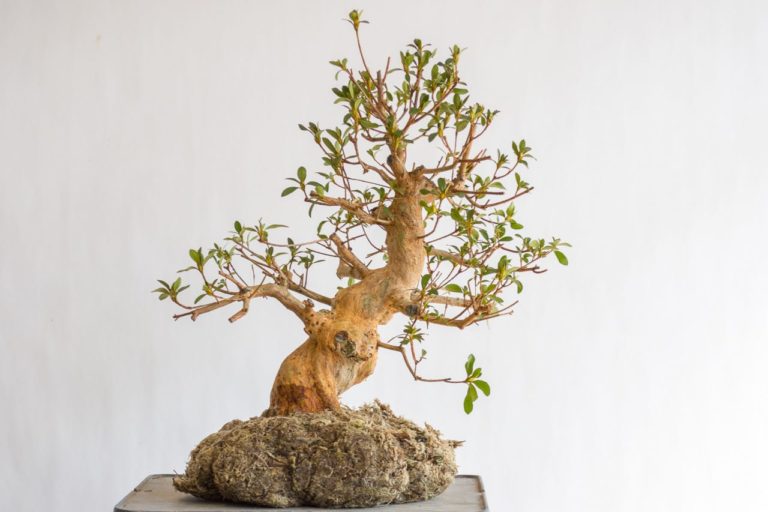
How to do repotting?
Repotting must be done carefully by digging a trench-like structure around the plant to separate the roots and soil. You don’t want to damage the roots, be gentle and let them stay intact.
Once you remove the plant from the soil, please place it in a container filled with water. After a few minutes, the soil will dissolve and loosen up near the roots. It’s a perfect time to pick the plant from the water and prune them before replanting again.
Azalea plants survive better in acidic soil; lime deposits harm these roots. Therefore, it is advisable to use lime-free water or rainwater to moisten your soil. Also, increase the acidity by adding more peat to the soil mixture when you replant them.
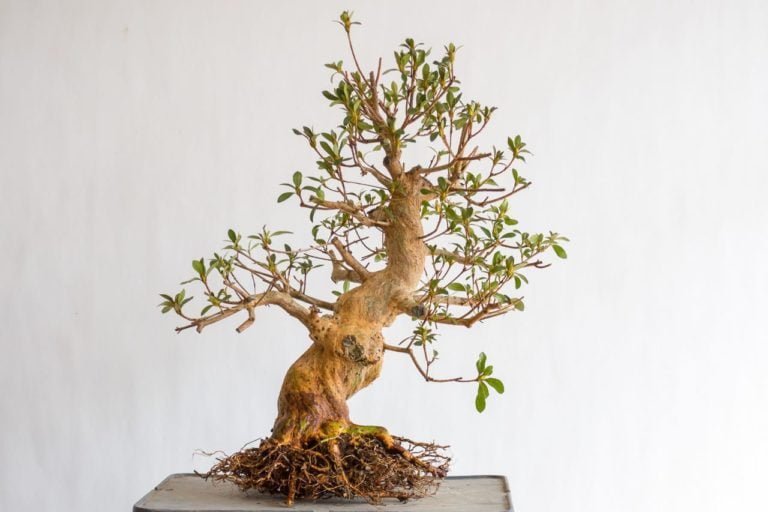
When to do repotting?
Like pruning, choose the end of spring or once the flowers have bloomed to start root pruning. You can also opt to do root pruning at the end of autumn.
The flowers and buds absorb so much energy from the plant. To regulate the nutrient flow, you trim the flowers before replanting them. You can manually remove all the old and new flowers and buds from the plants at the same time to save the plant energy.
Pro tip: you can induce flowering in the plant during the same period next year by removing the flowers and buds all at once. If the flowering starts early, you can slowly remove a few larger flowers from the plants.
Root pruning care
The roots of Azalea grow as fine and fibrous tips from larger tap roots. They grow vigorously and need pruning every two years. Prune the shoot first before pruning the roots; this refrains from adding extra stress to the plant.
It would be best to cut the bottom of the root balls every time of transplant, preferably in a conical fashion from the tip to the end of the trunk. Thick roots with poor drainage are prone to infections; check for rots in the roots and prune them immediately if you find any.
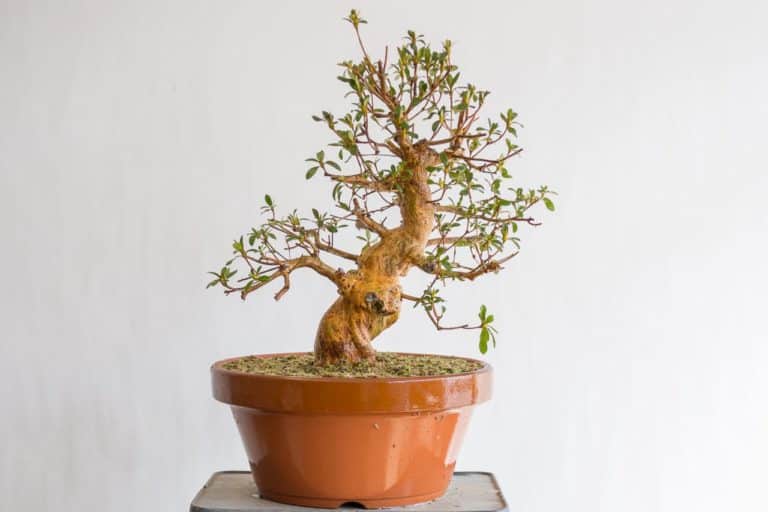
Propagation
Azalea is propagated through the cutting method; growing them from seeds is not a common practice. Instead, choose a softwood cutting after the flowering season or early summer to propagate a new Azalea bonsai plan.
With the quick-growing capacity of the plant, they are easily found overgrown on old wood and plantation. However, you can collect a healthy plant and trim it off until it stumps. Then, with proper cultivation, these cuttings can produce a new plant.
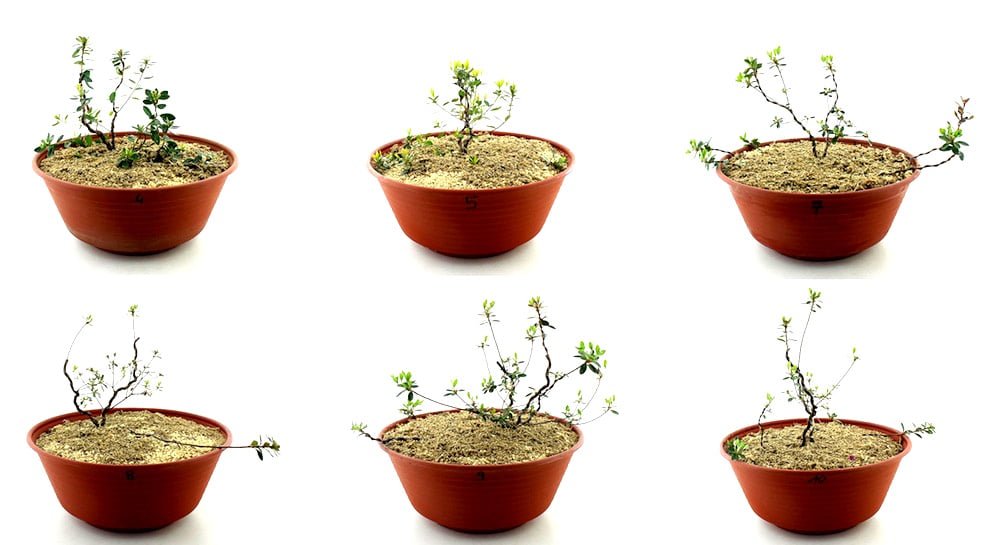
Pests and diseases
Being an outdoor plant, Azalea is susceptible to numerous pests and infections. Some of those are scale insects, aphids, whiteflies, leaf gall, scale insects, and lime-induced chlorosis (due to low acidity in the soil)
To control the pest, never spray the pesticides on the plant. It harms the bloomed flowers and buds. Instead, try a mild version of the chemicals like well-diluted dish soap ( 1 tsp soap, ¼ cup water). Spray this solution, followed by water, to disinfect and rinse the plant parts.
Conclusion
Azalea bonsai plants are here to bring color to your garden collections. The artistic nature of the plant calls for care and maintenance, as mentioned above. You can adore these flowery beauties in your terrace gardens or balconies, provided you regularly care for them.
Related Articles
- Propagating Chinese Elm Bonsai Cuttings And From Seeds
- Best Chinese Elm Bonsai Soil and Fertilizer.
- Troubleshooting Common Problems With Chinese Elm Bonsai
- Buy Chinese Elm Bonsai: How Not to Get Scammed When Purchasing a Chinese Elm Bonsai Tree!
- Chinese Elm Bonsai Pruning And Styling.
- Creating a Chinese Elm Bonsai Forest- Step-By-Step Guide.

